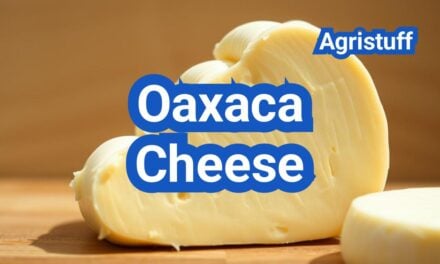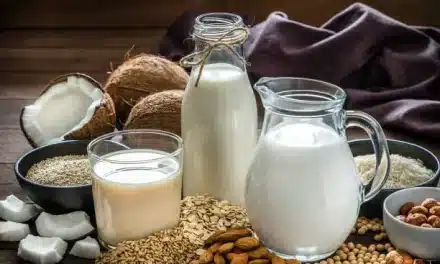Gorgonzola, a renowned Italian blue cheese consider as soft cheese, has a rich history dating back to the 9th century. Originating in Italy, it is known for its distinctive blue-green veining, a result of the introduction of Penicillium mold.
This cheese comes in various types and is used in a multitude of culinary dishes, from salads to pasta and pizza toppings. Understanding its history, types, and uses can enhance appreciation for this versatile ingredient.
Key Takeaways
- Gorgonzola cheese has a rich history originating in Italy.
- It is known for its blue-green veining due to Penicillium mold.
- The cheese comes in different types, including dolce and piccante.
- Gorgonzola is versatile and used in various culinary dishes.
- Understanding its history and types can enhance its use in cooking.
The Rich Heritage of Gorgonzola Cheese
Gorgonzola’s history is as complex and nuanced as its flavor profile, with origins tracing back to the town of Gorgonzola near Milan. This Italian blue cheese has been a cornerstone of culinary tradition for centuries.
Origins in Northern Italy
Gorgonzola cheese originated in the 9th century in the town of Gorgonzola, located near Milan in Northern Italy. The cheese was initially made from cow’s milk, and its production was influenced by the local monasteries. The unique blue veining characteristic of Gorgonzola was likely discovered by accident, as the cheese was often stored in damp cellars where mold could grow.
Evolution Through the Centuries
Over the centuries, Gorgonzola cheese production evolved, with the introduction of new techniques and aging processes. By the 11th century, Gorgonzola was being produced in its modern form, with a distinction between the sweeter, creamier “Dolce” and the tangier, more robust “Piccante.” The blue-veined cheese gained popularity across Europe, becoming a staple in fine dining.
The history of Gorgonzola is not just about its production; it’s also about its cultural significance. It has been a symbol of Italian cuisine and is often served at special occasions.
Understanding Gorgonzola Cheese

To appreciate Gorgonzola, one must understand its unique features and the regulations governing its production. Gorgonzola cheese is renowned for its distinctive veining and rich flavor profile, characteristics that are deeply rooted in its traditional production methods and geographical origins.
What Makes Gorgonzola Unique
Gorgonzola is made from cow’s milk and aged to develop its characteristic veining, which is a result of the introduction of a type of mold (Penicillium glaucum). This process not only contributes to its distinctive appearance but also to its robust flavor. The aging process can vary, resulting in different types of Gorgonzola, such as Gorgonzola Dolce and Gorgonzola Piccante, each with its unique taste profile.
Protected Designation of Origin (PDO) Status
Gorgonzola has been awarded the Protected Designation of Origin (PDO) status by the European Union, a recognition that underscores its authenticity and ties to specific production regions in Italy. This status ensures that authentic Gorgonzola cheese is produced according to traditional methods and within designated geographical areas, primarily in the Lombardy and Piedmont regions. The PDO status protects the name “Gorgonzola” and guarantees that the cheese meets specific production standards, thereby safeguarding its quality and authenticity.
The PDO designation is crucial for consumers, as it signifies that the Gorgonzola they are purchasing is made according to traditional methods and within the specified regions, ensuring a certain level of quality and authenticity.
Gorgonzola Cheese Types: Dolce vs Piccante
When it comes to Gorgonzola, two types stand out: Dolce, known for its creamy texture, and Piccante, recognized for its sharp flavor. These two varieties cater to different tastes and culinary applications, making Gorgonzola a versatile cheese in the kitchen.
Gorgonzola Dolce: The Creamy Variety
Gorgonzola Dolce is characterized by its mild, creamy texture and subtle flavor. This type of Gorgonzola is aged for a shorter period, typically around 3 to 5 months, which preserves its creamy consistency and delicate taste. It’s an excellent choice for those who prefer a milder blue cheese experience.
The creamy texture of Gorgonzola Dolce makes it ideal for spreading on crackers or bread, and it can be used as a dip or incorporated into sauces and dressings. Its mildness also makes it a good pairing with sweet elements like pears or honey.
Gorgonzola Piccante: The Sharp Classic
Gorgonzola Piccante, on the other hand, is aged for a longer period, typically around 3 to 6 months or more, resulting in a stronger, more pronounced flavor and a crumbly texture. This variety is perfect for those who enjoy a robust blue cheese experiencexperience.
Piccante’s sharp flavor makes it a great addition to salads, pasta dishes, and pizza. It can also be crumbled over soups or used as a topping for various dishes, adding a tangy, savory flavor.
| Characteristics | Gorgonzola Dolce | Gorgonzola Piccante |
|---|---|---|
| Aging Period | 3-5 months | 3-6 months or more |
| Texture | Creamy | Crumbly |
| Flavor | Mild, subtle | Sharp, pronounced |
Understanding the differences between Gorgonzola Dolce and Piccante allows consumers to choose the type that best suits their culinary needs and personal taste preferences. Whether you prefer the creamy mildness of Dolce or the sharp tang of Piccante, Gorgonzola offers a rich and flavorful experience.
The Complete Gorgonzola Cheese Production Process

The production of Gorgonzola cheese is a complex process involving several key steps. The journey to creating Gorgonzola cheese begins with careful milk selection and preparation.
Milk Selection and Preparation
The process starts with the selection of high-quality milk, typically from cows such as the Italian Friesian or Brown Swiss breeds. The milk is then pasteurized and mixed with a mesophilic or thermophilic starter culture to begin the fermentation process.
As the milk preparation concludes, the next step is curd formation and cutting.
Curd Formation and Cutting
The milk is then curdled using rennet, an enzyme that helps to coagulate the milk. The curd is left to firm up before it is cut into smaller pieces to release whey and create a smooth, even texture.
The introduction of blue mold is a critical step in Gorgonzola production.
The Critical Blue Mold Development
Penicillium glaucum spores are introduced to the curd, allowing the characteristic blue-green veining to develop. This step is crucial for achieving Gorgonzola’s distinctive flavor and appearance.
Finally, the cheese undergoes an aging process that can last from a few weeks to several months.
Aging and Maturation
During this period, the cheese is regularly turned and monitored to ensure the development of its full flavor profile. The aging process contributes to Gorgonzola’s tangy taste and creamy texture.
Essential Equipment for Gorgonzola Production
The production of Gorgonzola cheese relies on a variety of equipment, from traditional tools to modern machinery. The equipment used can significantly impact the quality and consistency of the final product.
Traditional Tools
Traditionally, Gorgonzola production has utilized wooden molds to shape the cheese. These molds allow for the characteristic veining of the cheese. Other traditional tools include stainless steel vats for curdling and cutting the curd.
Modern Manufacturing Equipment
In modern Gorgonzola production, automated aging facilities play a crucial role. These facilities allow for precise control over temperature and humidity, ensuring consistent aging. Modern equipment also includes mechanized cutting and packaging systems, which improve efficiency and reduce labor costs.
| Equipment Type | Traditional | Modern |
|---|---|---|
| Molds | Wooden molds | Stainless steel or plastic molds |
| Aging Facilities | Natural aging rooms | Automated aging facilities |
| Cutting and Packaging | Manual cutting and wrapping | Mechanized cutting and packaging |
The Distinctive Flavor Profile of Gorgonzola

The flavor profile of Gorgonzola is a complex blend of tanginess and sweetness, making it a unique cheese experience. Gorgonzola’s taste is shaped by its production process, including the introduction of mold and the aging process.
Taste Characteristics
Gorgonzola cheese is known for its tangy and slightly sweet flavor. The tanginess is a result of the mold introduced during the cheese-making process. The level of tanginess can vary between the Dolce and Piccante types.
Texture Variations
The texture of Gorgonzola can range from creamy to crumbly. Gorgonzola Dolce tends to have a creamier texture, while Gorgonzola Piccante is often more crumbly due to its longer aging process.
Gorgonzola’s versatility in both taste and texture makes it a popular choice for various culinary applications.
In conclusion, the distinctive flavor profile of Gorgonzola, characterized by its tangy taste and varied texture, sets it apart in the world of cheeses.
How to Select Quality Gorgonzola Cheese

The process of choosing the right Gorgonzola involves several key factors that determine its authenticity and quality. When buying Gorgonzola cheese, it’s essential to look beyond the packaging and inspect the cheese itself.
Visual Indicators of Quality
A high-quality Gorgonzola should have a characteristic veining of blue-green mold throughout. The color should be white or slightly off-white, with an even distribution of the mold. Check for any visible signs of aging or spoilage, such as excessive dryness or mold growth beyond the typical veininging.
Aroma and Texture Assessment
The aroma of authentic Gorgonzola is pungent and slightly tangy, reflecting its rich and creamy nature. When assessing the texture, a dolce Gorgonzola should be creamy, while a piccante will be more crumbly. The texture should be consistent with the type you’re purchasing.
Authenticity Markers
To ensure you’re purchasing authentic Gorgonzola, look for the Protected Designation of Origin (PDO) label, which is a European Union certification that guarantees the cheese is produced according to traditional methods within a specific region. Gorgonzola is one of the cheeses that has been granted this status, so checking for this label is a reliable way to verify its authenticity.
By paying attention to these factors, you can confidently select a high-quality Gorgonzola that meets your expectations in terms of taste, texture, and authenticity.
Proper Storage Techniques for Gorgonzola

Gorgonzola cheese requires specific storage conditions to preserve its flavor and texture. Proper storage techniques are essential to maintain its quality and freshness.
Temperature and Humidity Considerations
To store Gorgonzola correctly, it’s crucial to maintain the right temperature and humidity levels. Ideally, Gorgonzola should be stored in a cool environment with a temperature between 39°F and 46°F (4°C and 8 C). High humidity, typically above 80%, is also necessary to prevent the cheese from drying out. A cheese cave or a refrigerator with a high humidity setting can provide the ideal conditions.
Packaging Methods for Maximum Freshness
The way Gorgonzola is packaged significantly affects its freshness. It’s recommended to wrap the cheese tightly in plastic wrap or aluminum foil to prevent air from reaching it. For longer storage, placing the wrapped cheese in a sealed container or a zip-top bag can help maintain humidity around the cheese and keep it fresh for a longer period.
Culinary Applications of Gorgonzola Cheese

Gorgonzola cheese is a versatile ingredient used in various culinary applications. Its unique flavor profile makes it suitable for a wide range of dishes, from traditional Italian recipes to modern culinary innovations.
Classic Italian Recipes
Traditional Italian cuisine often features Gorgonzola as a key ingredient. It is used in risottos, pasta dishes, and salads. For example, a classic Italian salad might include Gorgonzola, mixed greens, walnuts, and a balsamic vinaigrette. As food critic, Giulia Ferraris, once noted,
“Gorgonzola is the soul of Italian cuisine, bringing a rich, creamy element to dishes.”
In cooking, Gorgonzola is often crumbled or melted to create a creamy sauce.
Modern Culinary Innovations
Modern chefs continue to innovate with Gorgonzola, incorporating it into contemporary dishes. It is used in fusion cuisine, paired with unexpected ingredients like honey and figs. Gorgonzola-stuffuffed burgers and Gorgonzola-topped pizzas are examples of its modern applications.
In conclusion, Gorgonzola’s versatility in culinary applications is vast, ranging from traditional Italian recipes to innovative modern dishes.
Creating the Perfect Gorgonzola Cheese Sauce

To make a mouth-watering Gorgonzola cheese sauce, start with high-quality Gorgonzola cheese. The key to a great sauce is in the balance of flavors and textures.
Basic Sauce Recipe
Begin by melting 1/2 cup of Gorgonzola cheese with 1/4 cup of heavy cream or milk in a saucepan over low heat. Stir constantly until the cheese is fully incorporated and the sauce is smooth. You can adjust the consistency by adding more cream for a thinner sauce or more Gorgonzola for a thicker one.
Variations and Enhancements
To give your Gorgonzola pasta sauce an extra boost, consider adding some herbs or spices. Chopped fresh parsley or thyme can add a bright, fresh flavor, while a pinch of nutmeg can enhance the sauce’s warmth. For a spicy kick, a dash of red pepper flakes can be added.
Experimenting with different combinations will help you find the perfect Gorgonzola cheese sauce to suit your taste.
How to Create a Gorgonzola Cheese Board

The art of assembling a Gorgonzola cheese board lies in balancing diverse elements to create a visually appealing and flavorful experience.
Complementary Cheese Selections
To complement Gorgonzola, consider including a variety of cheeses with different textures and flavors. Mild cheeses like Mozzareella or Brie can soften the boldness of Gorgonzola, while aged cheddar or Parmesan add depth. A mix of soft-ripened, hard, and blue cheeses creates a dynamic tasting experience.
For a harmonious selection, consider the origin and type of milk used in the cheeses. Pairing Gorgonzola with cheeses from the same region, like Italian Asiago or Fontina, can enhance the thematic coherence of your cheese board.
Accompaniments and Presentation
Accompaniments play a crucial role in elevatingating the Gorgonzola experience. Fresh or dried fruits like figs, grapes, or cranberries provide a sweet contrast, while nutty elements such as almonds or walnuts add crunch. Consider including artisanal jams or honey for added sweetness.
Presentation is key to a successful cheese board. Arrange cheeses and accompaniments in a visually appealing manner, using a variety of heights and textures. Garnish with fresh herbs like rosemary or thyme to add a pop of color and fragrance.
By thoughtfully selecting complementary cheeses and accompaniments, and presenting them with flair, you can create a Gorgonzola cheese board that delights both the palate and the eye.
How to Serve Gonzola Cheese

Serving Gorgonzola cheese is a nuanced process that can elevate its rich flavors and textures. The optimal serving of Gorgonzola cheese involves several key considerations to bring out its best qualities.
Temperature Considerations
To serve Gorgonzola at its best, it should be brought to room temperature. This allows the full depth of its flavors to be appreciated. Remove Gorgonzola from the refrigerator about 30 minutes to 1 hour before serving to allow it to warm up gently.
Presentation Techniques
The presentation of Gorgonzola can greatly enhance the dining experience. Consider slicing it thinly and arranging it on a cheese board or platter. Gorgonzola can be served on its own or as part of a larger cheese selection.
Accompaniments and Garnishes
Gorgonzola can be paired with a variety of accompaniments to complement its flavor. Fresh fruit, such as grapes or figs, can provide a sweet contrast to the cheese’s tanginess. Nuts, particularly walnuts or almonds, can add a satisfying crunch. For a more substantial offering, consider serving Gorgonzola with crackers or bread, such as crusty baguette slices.
Perfect Pairings for Gorgonzola
Gorgonzola cheese, with its distinctive veining and robust flavor, demands pairings that complement its bold character. The key to enjoying Gorgonzola lies in finding the right balance between the cheese and its accompaniments.
Wine and Beverage Matches
When it comes to pairing Gorgonzola with wine, there are several options to consider. Dessert wines like Moscato d’Asti or Vin Santo are excellent choices, as their sweetness counterbalances the tanginess of the cheese. For those who prefer red wine, a robust Barolo or Barbera can stand up to Gorgonzola’s bold flavors. If wine isn’t your preference, consider pairing Gonzola with a rich, craft beer or a digestif like Amaro.
Complementary Foods
Gorgonzola can be paired with a variety of foods to enhance its flavor. Fresh fruits like pears, apples, or grapes not only add natural sweetness but also provide a refreshing contrast to the richness of the cheese. Nuts, particularly walnuts or almonds, offer a satisfying crunch that complements Gorgonzola’s creamy texture. For a more savory approach, consider serving Gorgonzola with cured meats or alongside a crusty bread.
By thoughtfully pairing Gorgonzola with the right wines and foods, you can elevate the dining experience and fully appreciateiate the nuances of this iconic Italian cheese.
Gorgonzola Cheese Substitutes
Gorgonzola cheese substitutes are useful when the original is not available. Whether due to personal preference, dietary restrictions, or availability issues, having alternatives is helpful. Gorgonzola’s distinctive flavor profile is characterized by its tangy, slightly sweet, and pungent notes, making it a versatile ingredient in various dishes.
Other Blue Cheese Alternatives
If you’re looking for other blue cheeses to substitute Gorgonzola, several options are available. Roquefort, a French blue cheese, offers a similar pungency, while Stilton, an English blue cheese, provides a richer, creamier alternative. Other options include Danish blue and Fourme d’Ambert. These cheeses share some of Gorgonzola’s characteristics and can be used in similar culinary contexts.
| Blue Cheese | Origin | Description |
|---|---|---|
| Roquefort | France | Pungent, tangy, with a distinctive veining |
| Stilton | England | Rich, creamy, with a tangy flavor |
| Danish Blue | Denmark | Mild, semi-soft, with a slightly sweet taste |
| Fourme d’Ambert | France | Mild, creamy, with a subtle tanginess |
Non-Blue Cheese Replacements
For those who prefer not to use blue cheese or need a different flavor profile, non-blue cheese alternatives can be considered. Feta cheese, with its salty, tangy taste, can add a similar boldness to dishes. Goat cheese, known for its creamy texture and mild flavor, can also serve as a substitute in certain recipes. Additionally, cheeses like Parmesan or Pecorino can be used to add a salty, umami flavor, although they lack the tanginess of Gorgonzola.
Gorgonzola vs. Other Blue Cheeses
Among the array of blue cheeses, Gorgonzola holds its own with its distinct taste and texture. Blue cheeses have gained popularity worldwide for their strong flavors and versatility in culinary applications. Gorgonzola, originating from Italy, is often compared to other renowned blue cheeses like Roquefort from France and Stilton from England.
Comparison with Roquefort
Gorgonzola Cheese and Roquefort Cheese share some similarities, such as their strong, pungent flavors, but they differ significantly in terms of texture and production methods. While Roque for is made from sheep’s milk, Gorgonzola is typically made from cow’s milk. This difference contributes to distinct flavor profiles and textures.
“Roquefort is known for its sharp, salty taste, whereas Gorgonzola can range from creamy to sharp, depending on its age,”
Differences from Stilton
Stilton, another prestigious blue cheese, differs from Gorgonzola in both taste and appearance. Stilton has a richer, more buttery flavor due to its higher fat content, and its veining is typically more pronounced. Gorgonzola, on the other hand, can have a more varied appearance, with its veining ranging from minimal to extensive, depending on the type. Stilton is often described as having a more robust and complex flavor profile compared to Gorgonzola.
Contrasting with American Blue Cheeses
American blue cheeses, such as Maytag Blue or Point Reyes Original Blue, have their own unique characteristics. They often fall somewhere between Gorgonzola and Stilton in terms of flavor intensity and texture. American blues can be sharper and more crumbly, similar to Gorgonzola’s piccante variety, or creamier, akin to its dolce counterpart. The diversity in American blue cheeses reflects the innovative approaches to cheese-making in the United States.
In conclusion, while Gorgonzola is distinct, it shares a common ground with other blue cheeses in terms of its robust flavor and versatility in culinary applications. Understanding these differences can help appreciate the unique qualities of each cheese.
Nutritional Profile of Gorgonzola Cheese
Gorgonzola, a cheese with a storied history, also boasts a unique nutritional profile that is of interest to health-conscious consumers. Understanding the nutritional aspects of Gorgonzola cheese is essential for making informed dietary choices.
Caloric and Macronutrient Content
Gorgonzola cheese is known for its rich caloric and macronutrient content. A 100-gram serving of Gorgonzola typically contains around 357 calories, with a significant portion coming from its fat content, which includes both saturated and unsaturated fats. It is also a good source of protein, making it a nutritious option for those looking to increase their protein intake.
| Nutrient | Amount per 100g |
|---|---|
| Calories | 357 |
| Fat | 28.4g |
| Protein | 19.1g |
| Carbohydrates | 0.0g |
Health Benefits and Considerations
Despite its high calorie and fat content, Gorgonzola cheese offers several health benefits. It is a rich source of beneficial bacteria, which can support gut health. Additionally, Gorgonzola contains conjugated linoleic acid (CLA), a nutrient that has been associated with various health benefits. However, due to its high fat content, moderation is key when incorporating Gorgonzola into a balanced diet.
Moderation is essential when consuming Gorgonzola to reap its nutritional benefits without overloading on calories and fat.
Embracing the Gorgonzola Experience
Gorgonzola cheese is a versatile and rich addition to various culinary experiences. Enjoying Gorgonzola cheese can elevate dishes from simple to sophisticated, offering a depth of flavor that is both tangy and creamy.
The Gorgonzola culinary experience is not limited to traditional Italian recipes; it can be incorporated into modern cuisine in numerous ways, from sauces and dips to being a centerpiece for cheese boards.
As explored, Gorgonzola’s unique qualities make it a valuable ingredient for chefs and home cooks alike. Whether you’re savoring Gorgonzola dolce or piccante, the experience is sure to be memorable.
Embracing Gorgonzola in your culinary adventures opens up a world of flavors, enhancing meals and creating lasting impressions on those who enjoy them.
FAQ
What is Gorgonzola cheese?
Gorgonzola is a type of blue cheese originating from Northern Italy, known for its distinctive veining due to the introduction of Penicillium mold.
What are the different types of Gorgonzola cheese?
The two main types of Gorgonzola are Dolce and Piccante. Dolce is characterized by its creamy texture and mild flavor, whereas Piccante is known for its sharp taste and crumbly texture.
What is the Protected Designation of Origin (PDO) status for Gorgonzola?
Gorgonzola’s PDO status ensures its authenticity is tied to its production in specific regions of Italy, guaranteeing its traditional production methods and quality.
How is Gorgonzola cheese made?
Gorgonzola production involves milk selection, curd formation, cutting, and the introduction of Penicillium mold, followed by an aging process that develops its characteristic blue veining.
What are the traditional tools used in Gorgonzola production?
Traditional tools include equipment such as cheese molds and aging facilities that have been used for centuries in the production of Gorgonzola.
How do you store Gonzola cheese properly?
Proper storage involves maintaining the right temperature and humidity levels, and using appropriate packaging to keep the cheese fresh.
What are some classic Italian recipes using Gorgonzola?
Gorgonzola is used in various traditional Italian dishes, such as pasta sauces, risottos, and as a topping for pizzas and salads.
Can Gorgonzola be used in modern culinary innovations?
Yes, Gorgonzola is versatile and can be incorporated into modern recipes, such as sauces, dips, and as a topping for various dishes.
How do you create a Gorgonzola cheese sauce?
A basic Gorgonzola cheese sauce can be made by melting the cheese with cream or milk, and can be enhanced with herbs and spices.
What are some complementary cheeses to Gonzola on a cheese board?
Complementary cheeses can include a variety of textures and flavors, such as creamy brie, tangy goat cheese, or sharp parmesan.
How should Gorgonzola be served?
Gorgonzola should be brought to room temperature, presented attractively, and paired with complementary foods such as fruits, nuts, and crackers.
What are some perfect pairings for Gorgonzola?
Gorgonzola pairs well with wines such as Moscato or Port, and foods like pears, honey, and crackers.
Can other blue cheeses be used as substitutes for Gorgonzola?
Yes, other blue cheeses like Roquefort or Stilton can be used as substitutes, although they may have different flavor profiles and textures.
What is the nutritional profile of Gorgonzola?
Gorgonzola is relatively high in calories and fat, but it also contains beneficial bacteria and can be part of a balanced diet.
Is Gorgonzola cheese healthy?
Gorgonzola contains beneficial bacteria that can aid digestion, but it should be consumed in moderation due to its high calorie and fat content.
What is the difference between Gorgonzola and other blue cheeses?
Gorgonzola has a unique flavor profile and texture compared to other blue cheeses, with its creamy Dolce and sharp Piccante varieties.
Conclusion of Gorgonzola Cheese: Dolce vs Piccante and How to Serve
Intro: what makes Gorgonzola cheese special?
Gorgonzola cheese is Italy’s iconic blue-veined PDO that stands out for its buttery texture, bold aroma, and delicate blue-green marbling created during ripening. For U.S. readers, Gorgonzola cheese represents both reliability—thanks to strict rules—and versatility in the kitchen, delivering character whether it’s melted into a sauce or crumbled onto a salad. Consorzio overview of Gorgonzola PDO
Gorgonzola cheese in American kitchens
From steak salads and burgers to flatbreads, risottos, and gnocchi, Gorgonzola cheese earns its spot on everyday menus because it melts smoothly yet remains flavorful when served cool. Home cooks often keep Gorgonzola cheese on hand for quick weeknight sauces, creamy dressings, or a rich finish to roasted vegetables. Official pairing ideas and serving suggestions
A brief history of Gorgonzola cheese
Legends trace Gorgonzola cheese to the medieval Lombardy region, with stories linking it to the town of Gorgonzola near Milan and to Alpine cave-aging traditions in Valsassina. Over centuries, Gorgonzola cheese evolved from rustic, location-bound craft into a tightly protected PDO with consistent quality. Consorzio: the origins of Gorgonzola cheese
PDO area: where Gorgonzola cheese is made
Only milk and production within specified provinces of Lombardy and Piedmont can yield authentic Gorgonzola cheese. This geographic link to place (terroir) helps explain the unique flavor profile and ensures shoppers in the U.S. are buying true Gorgonzola cheese when they see PDO labeling. Authorized production provinces (PDO area)
PDO rules that define Gorgonzola cheese
Under PDO regulations, Gorgonzola cheese is made from pasteurized cow’s milk and ripened within specific time windows. These rules standardize the texture, flavor, and appearance of Gorgonzola cheese from wheel to wheel, giving consumers dependable quality cues on every purchase. Consorzio summary of styles and ripening
Dolce vs Piccante: two official styles of Gorgonzola cheese
Gorgonzola cheese comes in two PDO styles. Dolce Gorgonzola cheese is mild, creamy, and spreadable, while Piccante Gorgonzola cheese (also called “naturale”) is firmer, drier, and tangier. Choosing between Dolce and Piccante Gorgonzola cheese is mostly about texture and intensity for the dish you have in mind. Official style definitions: Dolce vs. Piccante
Why Dolce Gorgonzola cheese tastes creamy
Shorter aging and higher moisture mean Dolce Gorgonzola cheese melts into velvety sauces and spreads beautifully on warm bread. If you like a gentle blue with a soft finish, Dolce Gorgonzola cheese is a forgiving, user-friendly choice for weeknight cooking and appetizers. Pairing and serving tips for Dolce
Why Piccante Gorgonzola cheese tastes bolder
With longer ripening, Piccante Gorgonzola cheese develops a denser paste and more assertive aroma, making it excellent in salads, on charcuterie boards, or crumbled onto roasted meats. When you want intensity and sharpness, Piccante Gorgonzola cheese brings the punch. Pairing and serving tips for Piccante
Processing step 1 — Milk selection & pasteurization
Authentic Gorgonzola cheese starts with pasteurized cow’s milk, a safety-first choice that also supports reliable flavor development during ripening. Producers committed to the PDO ensure Gorgonzola cheese respects both tradition and modern food-safety expectations. Consorzio note on pasteurization and authenticity
Processing step 2 — Starter cultures and Penicillium
Lactic cultures establish acidity while Penicillium molds set the stage for veining; together, these controlled cultures guide Gorgonzola cheese toward its signature flavor and texture. Temperature, dosing, and timing are critical inputs in shaping consistent Gorgonzola cheese. University of Guelph: Cheesemaking Technology eBook
Processing step 3 — Coagulation and curd handling
After rennet is added, the milk for Gorgonzola cheese coagulates and is cut to release whey. Curd size, stirring, and drainage determine moisture and influence the eventual body of Gorgonzola cheese—particularly its spreadability and mouthfeel. Guelph eBook: general cheesemaking outline
Processing step 4 — Molding and turning
Curds destined for Gorgonzola cheese are gently ladled into molds and turned to drain evenly, creating the cylindrical shape and an internal paste that will accept blue-vein development. Uniform handling at this stage supports consistent Gorgonzola cheese quality. Guelph eBook: curd handling and pressing
Processing step 5 — Salting
Salting seasons the paste, regulates moisture, and creates conditions for desirable microbes to thrive in Gorgonzola cheese. Whether applied dry or via brine, proper salt management is essential for stable ripening of Gorgonzola cheese. Guelph eBook: salting fundamentals
Processing step 6 — Needling (piercing) to create the veins
During maturation, wheels of Gorgonzola cheese are pierced to introduce air pathways, allowing Penicillium to form the blue-green marbling. The pattern and timing of needling strongly influence the look and flavor of Gorgonzola cheese. Wisconsin Center for Dairy Research: blue cheese overview
Processing step 7 — Ripening windows
Time is flavor: Dolce Gorgonzola cheese typically ripens from about 50 days, while Piccante Gorgonzola cheese requires longer aging for a firmer, spicier character. Clear windows keep Gorgonzola cheese styles consistent for consumers worldwide. Consorzio: ripening and style details
Processing step 8 — Wrapping and authenticity marks
After grading, Gorgonzola cheese is wrapped—often in distinctive goffered foil with the “g” logo—and labeled to indicate the PDO and the Dolce or Piccante style. These signals help shoppers confirm authentic Gorgonzola cheese at a glance. Consorzio: recognition marks and labeling
Essential equipment used to make Gorgonzola cheese
Commercial production of Gorgonzola cheese typically involves HTST pasteurizers, standardized milk tanks, cheese vats with cutting tools, draining tables, molds, climate-controlled ripening rooms, and hygienic packaging lines. This toolchain enables safe, repeatable Gorgonzola cheese quality at scale. Guelph eBook: equipment for cheesemaking
Specialized tools for blue-veined cheeses like Gorgonzola cheese
Blue styles require piercing frames or mechanized needle systems to create consistent oxygen channels. Sanitary, stainless-steel designs help ensure even veining and stable ripening in Gorgonzola cheese. CDR: process characteristics for blue cheese
Culinary uses: how chefs and home cooks use Gorgonzola cheese
Try melting Dolce Gorgonzola cheese into cream for steak sauce, folding it into polenta, or finishing a mushroom risotto; crumble Piccante Gorgonzola cheese into chicory salads or onto a grilled burger. The contrast of sweet, bitter, and savory lets Gorgonzola cheese shine. Consorzio recipes and inspiration
How to serve Gorgonzola cheese (temperature and texture)
Let Gorgonzola cheese warm at room temperature for about 30 minutes before serving to open aroma and soften texture—especially for Dolce. If a cut face of Gorgonzola cheese has darkened slightly, trim a thin slice for the freshest flavor. Consorzio: conservation and service tips
How to store Gorgonzola cheese safely at home
Wrap Gorgonzola cheese tightly (foil or a sealed container) and refrigerate; buy modest quantities and enjoy within days for best flavor. Piccante Gorgonzola cheese usually keeps a bit longer thanks to its lower moisture content. Official storage guidance
Food-safety notes for vulnerable groups (including pregnancy)
Choose pasteurized Gorgonzola cheese in the U.S. and follow public-health guidelines for higher-risk individuals. Some soft, unpasteurized cheeses can carry Listeria; pasteurized, properly handled Gorgonzola cheese is the safer option for pregnant people and other vulnerable groups. CDC: Listeria risk and guidance
If you see “unexpected” mold on Gorgonzola cheese at home
Blue veining is expected, but other molds on the cut surface of Gorgonzola cheese are not. U.S. guidance advises discarding soft cheeses with unintended molds; when in doubt, it’s best to throw it out to keep Gorgonzola cheese a safe pleasure. USDA FSIS: Molds on food
Nutrition snapshot for Gorgonzola cheese
A typical 100 g serving of Gorgonzola cheese provides roughly 314 kcal, about 27 g fat, ~18 g protein, and notable calcium. Labels vary by wheel and style, but these figures help U.S. consumers compare Gorgonzola cheese with other cheeses. Consorzio: nutrition and characteristics
Buying authentic Gorgonzola cheese in the U.S.
Look for the “g” logo, PDO symbols, and clear style labeling (Dolce or Piccante) to confirm authentic Gorgonzola cheese. Trusted specialty retailers and well-stocked supermarkets usually carry genuine Gorgonzola cheese with proper packaging and provenance. Consorzio: how to recognize real PDO
Final thought
Whether you crave mellow creaminess or bold tang, matching Dolce or Piccante Gorgonzola cheese to the dish—and serving it at the right temperature—makes all the difference. Respect the PDO cues, store Gorgonzola cheese properly, and enjoy its depth across simple meals and special occasions. More serving & pairing ideas from the Consorzio
Sources & References
- Consorzio per la Tutela del Formaggio Gorgonzola: “The Gorgonzola”
- Consorzio: “The origins of Gorgonzola cheese”
- Consorzio: “Production area” (PDO provinces)
- Consorzio: “Conservation and Service”
- Consorzio: Recipes
- Consorzio: Pairings
- Consorzio news: pasteurized milk clarification
- University of Guelph: Cheesemaking Technology eBook
- USDA FSIS: Molds on Food










